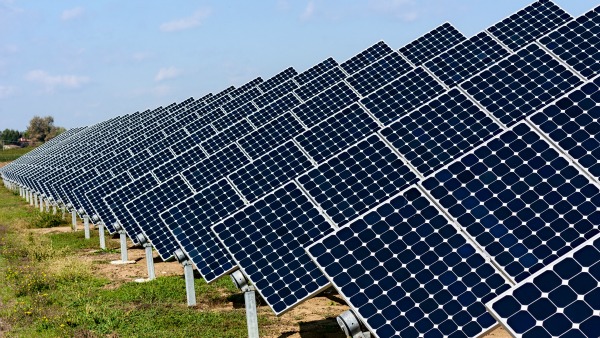Yesterday I wrote that solar PV and other distributed-energy technologies pose a radical threat to U.S. power utilities and the centralized business model they’ve operated under for the last century. This is, I hasten to add, according to the utilities themselves.
So what should be done about it?
It’s complicated. On one hand, more distributed renewable energy is a good thing. It reduces carbon emissions, increases resilience, stimulates the growth of new industries with new jobs, and gives Americans a taste of energy democracy.
On the other hand, it just won’t do to have utilities view the spread of rooftop solar PV as an existential threat. Whatever you think of them, utilities still have tons of political power. If they want to slow the spread of distributed energy, they can. A lot.
So let’s look at their complaint. But one key thing to keep in mind as we do is that the utilities’ primary objective, the impetus behind the recent report from their trade group, Edison Electric Institute, is to protect their business model and their profits. That’s what business groups do.
Which is fine. EEI’s concern is what it should be: how the industry and regulators can act quickly in the short term to protect utilities, to give them room to develop a long-term strategy for grappling with the rapid spread of distributed energy. However, it’s not clear why protecting utility shareholders ought to outrank other social goals. EEI’s recommendations should be taken with a grain of salt.
Here’s the problem, as EEI sees it: Utility customers are being subsidized in various ways to install solar panels — tax credits, state renewable energy standards, feed-in tariffs, net metering, what have you. Those are the explicit subsidies. But there’s also an implicit subsidy. As solar customers pay less to the utility, they contribute less to the maintenance of the electric grid and other utility “fixed” assets. The utility’s fixed costs (as opposed to the variable costs of fuel and electricity) must be recovered from the other ratepayers. “This type of lost revenue recovery drives up the prices of those non-participating customers,” EEI writes, “and creates the environment for ongoing loss of additional customers as the system cost is transferred to a smaller and smaller base of remaining customers.”
This is always the rap on solar PV programs from critics: They amount to forcing poor ratepayers to subsidize the green indulgences of the more well-to-do.
Now. If it’s true that distributed solar is raising costs for those who don’t have it, as a shrinking class of customers shoulders more and more of the burden, then it’s obviously not sustainable and something will have to change.
However, it’s worth pausing a moment to consider whether it is true. In some ways, EEI’s discussion reflects utilities’ instinctive hostility toward distributed energy. It makes a great deal of the costs of incorporating rooftop solar PV into the system, but says little about the benefits.
And there are benefits. In January, energy analysts at Crossborder Energy did a careful study [PDF] of California’s net-metering policy, tallying up costs and benefits. (The study was commissioned by the Vote Solar Initiative.) The costs are those described above — all utility customers pay for credits to solar customers and for the metering and billing necessary to integrate them in the grid.
But as utilities get power from solar, they don’t have to get it elsewhere. There are “avoided costs,” which benefit all ratepayers, not just the solar few. Here are the benefits Crossborder considered (and the California PUC has considered in rate cases):
• Avoided energy costs
• Avoided capacity costs for generation
• Reduced costs for ancillary services
• Lower line losses on the transmission and distribution system (T&D)
• Reduced investments in T&D facilities
• Lower costs for the utility’s purchase of other renewable generation
Long story short, Crossborder found that a) the costs and benefits alike were relatively small beans, and b) the benefits outweighed the costs by a small margin.
Now, obviously this doesn’t mean distributed solar always and everywhere lowers costs for non-solar utility customers. But it does suggest that utilities shouldn’t assume the inverse either. It’s a case-by-case, location-by-location determination. Midwest Energy News (which you should be reading) did a great piece on this subject recently. I thought this bit captured it well:
“This is exactly the same as when a private company, an electric utility, for example, is approved by its regulator to build a conventional power plant ‘in the public interest’,” says [renewable energy analyst Paul] Gipe. The costs and benefits are studied, and if regulators think the plant is in the public’s interest, they will approve it even if it results in new costs for customers.
In other words, programs like net metering and feed-in tariffs aren’t “subsidies,” per se, they are simply different ways to pay a fair price for power generation.
If it is true that encouraging rooftop solar does not — or does not necessarily — raise rates for non-solar customers, then part of EEI’s case falls apart. Massive rate increases on non-solar customers are its way of scaring policymakers into action to protect utility profits. If those rate increases don’t manifest, all EEI has is a raw plea to lawmakers to protect shareholder profits. Not quite as compelling!
However, the prospect of a bunch of utilities going bankrupt isn’t exactly attractive. So what does EEI think it needs for utilities to avoid being swept away?
Not surprisingly, the short-term recommendations mostly amount to making rooftop solar customers pay more. First, EEI wants all power bills to include a flat charge for fixed costs, which would apply to all grid-connected customers. That would insure a minimum contribution from everyone. Second, they want solar customers charged for the services the grid provides them: “off-peak service, back-up interruptible service, and the pathway to sell [distributed energy resources] to the utility or other energy supply providers.” And third, it wants net-metering programs revised to pay solar customers only the going market rate, not some fancy subsidized rate.
All these measures would have the same effect: reduce the economic incentives for rooftop solar and thus slow its adoption. That seems less than ideal. But there is a need for costs to be more transparent and for all ratepayers to be charged appropriately for the services they receive. And again, the utilities cannot be locked into a death spiral this far in advance. It’s not healthy for them to be in a pitched battle with their customers and the planet. It’s politically untenable.
On energy efficiency, which poses many of the same threats to utilities, the conflict has been somewhat papered over by “decoupling,” whereby a utility’s profits are disassociated from its sales of energy. (If usage declines, rates rise to cover the difference.) In practice, this mostly amounts to paying utilities — or rather, having ratepayers pay utilities — to run energy efficiency programs. One can imagine something similar with distributed energy programs.
But decoupling has always struck me as a classic kludge. It amounts to forcing utilities to slowly dig their own graves, strand their own assets. They’ll do it if forced by law, but they won’t do it enthusiastically. They won’t innovate. They’ll do what they have to and no more.
What’s needed, then, is something deeper, a more fundamental restructuring of the utility model, a way to escape once and for all the cross-incentives that are pitting utilities against energy democracy.
What would that look like? This is where I admit: hell if I know. Making utilities work is so complicated it makes my head hurt. I do know that lots of smart people are working on this problem right now, and the work they’re doing is some of the most interesting and important happening in the energy world. It’s a bit of an anticlimax, but let me … suggest further reading:
- Over at NDN, Michael Moynihan did a great report called “Electricity 2.0: Unlocking the Power of the Open Energy Network.” It wrestles with exactly these issues in an incisive and comprehensive way.
- At the Center for American Progress, Bracken Hendricks and Adam James recently put out a report called “The Networked Energy Web” that addresses many of the same questions.
- The Rocky Mountain Institute has a program called eLab devoted to creating a modern electricity system. Check out this video they made and see if it doesn’t sound familiar!
Let me know if you’ve seen other good resources on the topic.
Anyway, that’s all I’ve got for now: reading assignments. Sorry! I’ll definitely be writing more on this as I see good ideas pop up. Share yours in comments.




